
 |
|
|
|
#1
|
||||
|
||||
|
Not all cold fronts bring violent weather, some do however. Often indications of heavy weather are fairly obvious from weather records such as the example from March 2005 that appears below. Sometimes you can time your session to AVOID the squall line at the leading edge of some fronts. This particular front had more than one however.
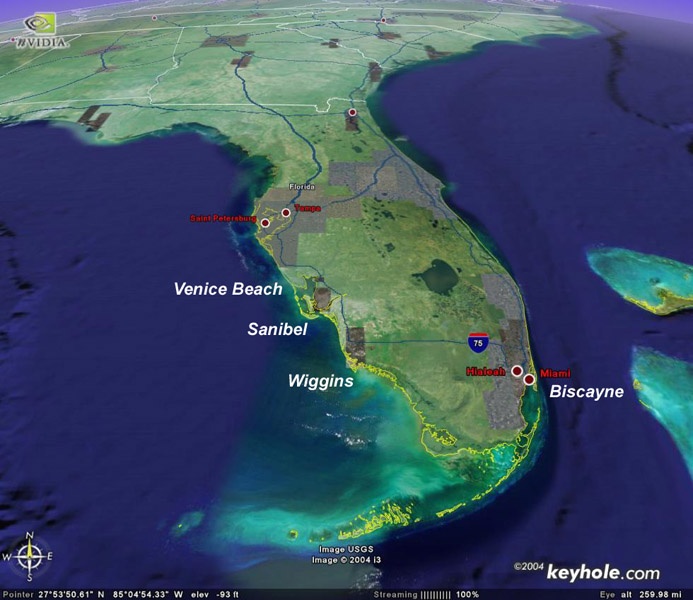 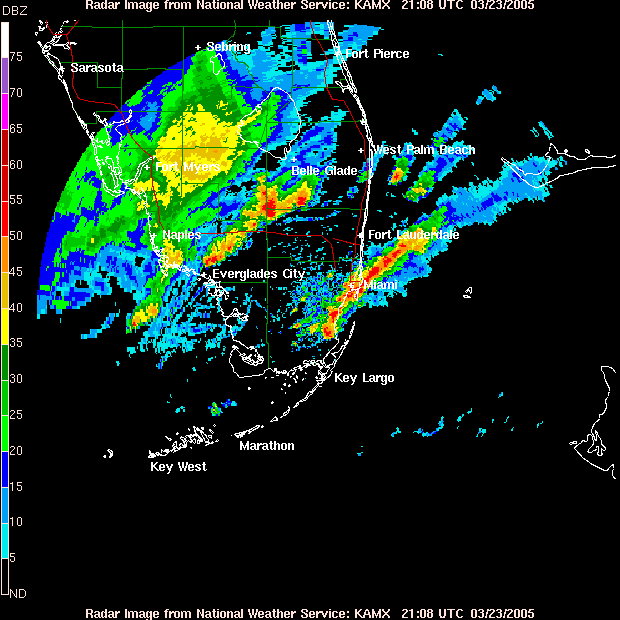 The color radar showed several squall lines of potentially violent weather. 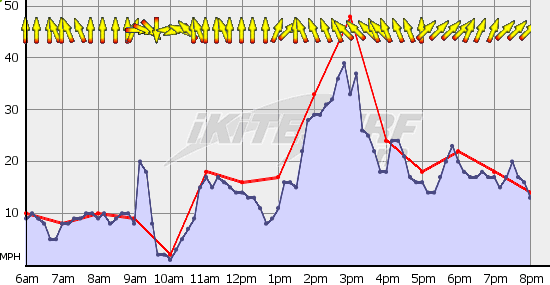 Venice Beach, FL This station on the west coast of Florida had already been hit with strong squall gusts. Note the 90 degree direction change typical of frontal winds and the irratic direction changes common in squall gusts. 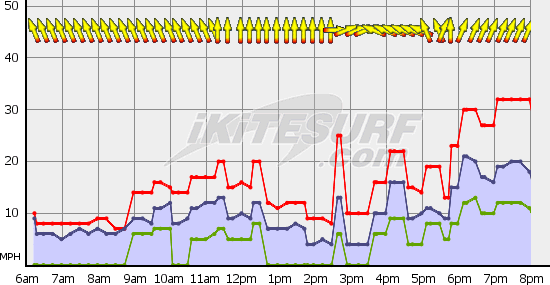 Sanibel, FL 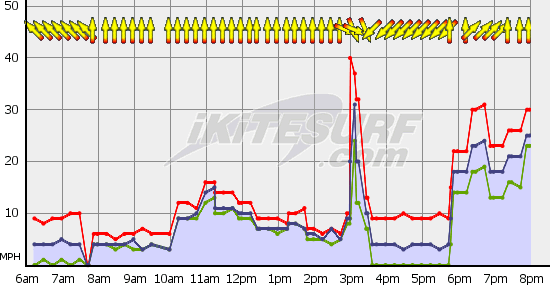 Wiggins, FL 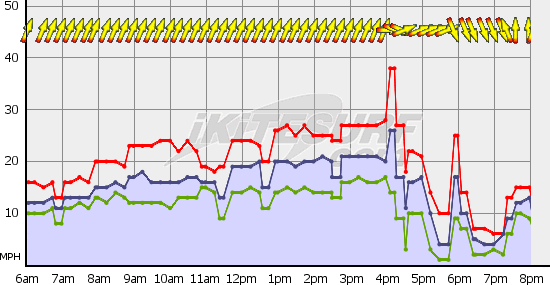 Key Biscayne, FL 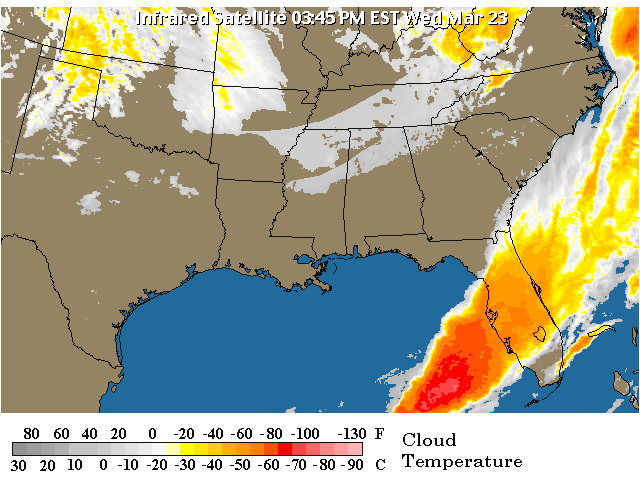 That isn't a blow torch flame roasting Florida but in fact a color enhanced satellite image of a "weak" cold front. 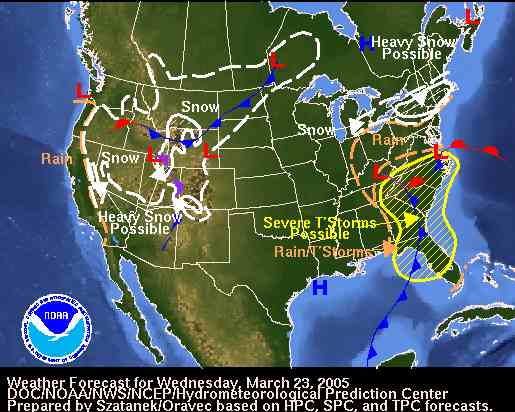 The weather map showed a frontal boundary sweeping across the southeast with SEVERE thunderstorms possible. 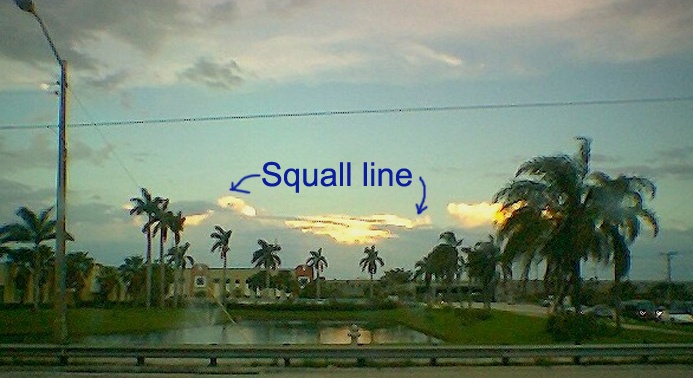 One of the squall bands off to the east, over the ocean at about 5 pm. All that blue sky and that big nasty band on weather clear as day.  The squall line at the leading edge of the front strikes SW Florida near Marco Island and the wind spikes up to at least 40 mph, possibly more. Note the classic 90 degree direction change in the wind. 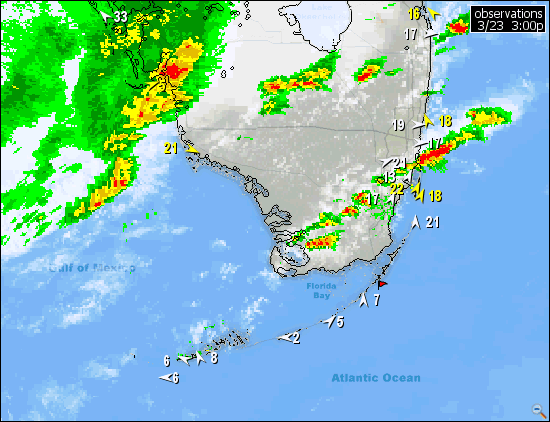 Enhanced color radar and satellite imagery from around 3 pm with the SW coast getting struck by the squall line. 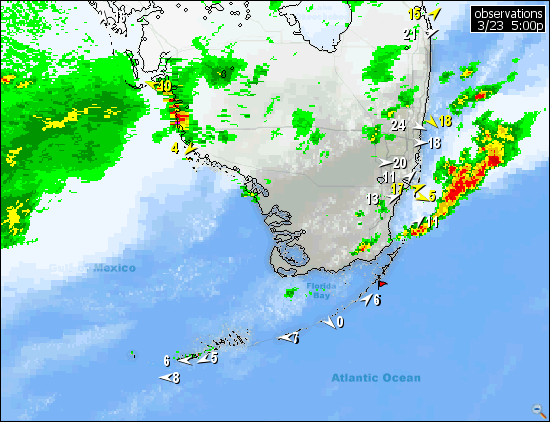 More imagery from TWO hours later at 5 pm.
__________________
FKA, Inc. transcribed by: Rick Iossi |
|
#2
|
|||
|
|||
|
Just to add a little helpful meteorology. Air movement is counterclockwise around a low pressure area, and clockwise around a high. With the passage of a front, the wind always changes in speed and direction. When you see the surrounding isobars around a low or a high pressure area, the closer they are together, the larger the wind gradient. And finally, if you see an anvil shaped cumulonimbus, the storm is usually traveling in the direction the anvil is pointing. The anvil is formed by the upper level stronger winds "knocking" the top of the thunderstorm downwind, and often will emit hail into the "clear" zone beneath the anvil. The correct formula for estimating how far away lightning is, is when you see the lightning count the number of seconds it takes for the thunder to reach you. 5 seconds = i mile, not 5 seconds = 5 miles as some people believe. Since lightning can strike up to 10 miles away, we're dealing with the time from lightning to thunder of 50 seconds!!!!! ( Note: due to the curvature of the earth, a 6 foot man at sea level, only sees the horizon seven miles away. Of course a 40,000 ft storm cloud is visible a long ways away.)
|
|
#3
|
||||
|
||||
|
Good Rules Of Thumb ConchExpress. I particularly like the one about wind shifts with passage of cold fronts. A big wind boost and squalls can also come through around the same time. The frontal wind shift often seems to be about 90 degrees in a clockwise direction. In some cases this leads to sudden, power offshore winds which were previously lighter and onshore. This blew a kiter out to sea in Connecticut a few years back. It also sent some Panhandle kiters in a kayak trying to recover a kite out to sea for a cold night of floating around. Cold fronts are rarely a secret and you can even guess fairly accurately when they may cross your location. No real excuse for getting caught out by a hazardous wind direction shift, getting caught in a squall line or being yoked by predicted wind spikes at the leading edge of the front.
Coming from flying, what things are you particularly tuned into when it comes to kiting weather and precautions?
__________________
FKA, Inc. transcribed by: Rick Iossi |
|
#4
|
|||
|
|||
|
Rick
I have one piece of equipment in my plane that I won't fly without. It's a Garmin 396 GPS that has XM satellite weather. It's not as up-to-date as on- board real time radar, which is quite expensive, but it does give relatively timely Nexrad radar information which is usually updated every couple of minutes. In addition it gives winds aloft, lightning strikes, cell movement, cloud levels, and individual reporting station weather, as well as severe weather alerts. Apart from the initial cost of the unit, the XM weather is 9.95/month. I can also get XM radio with it, just in case I get bored. It can function on battery power alone, and could be used quite easily on the beach. I think the most worrisome thing that we as kiteboarders might have to deal with are microbursts and their associated gust fronts. Gust fronts happen to some degree with every mature thunderstorm, and it's the increase in a cooler wind that we feel in the face of an approaching TS. However, it emanates in a radial pattern from the cell and can be felt even if the storm is moving away from us. Normally the increase in wind is usually in the 10mph range. But with an entity called a microburst, conditions within the cell accelerate the downdrafts and the wind increase can be quite significant. Some gust fronts have been clocked at 168mph, but typically they are more in the range of 60mph with this type of phenomenon. As the gust front moves outward, friction from the ground or base causes the leading edge to roll upward causing a severe wind shear. How would you like to get lofted by a 60mph updraft? Microbursts were once thought to only occur with supercells, but now are known to occur with your run of the mill airmass thunderstorms that make up our summertime pattern here in Florida. Airmass TS are the result of the differential heating and cooling of the surface, and are not usually associated with a frontal line. The safe rule of thumb in flying is to give all thunderstorms a 20 mile buffer zone. They bring down Jumbo jets, so imagine one measly kiteboarder. 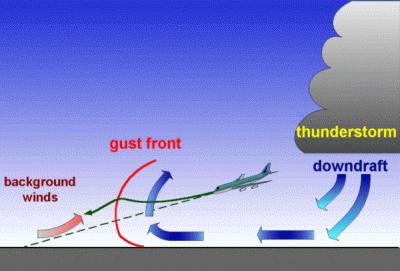
|
|
#5
|
||||
|
||||
|
Thanks for your detailed input, good stuff! There was a particularly notable microburst involving a kiteboarder in Utah a few years back. I recall it was his sixth or seventh microburst while he was riding. Dry microburst may be even more common in the western states than the wet variety in our area. They have some fairly sophisticated warning measures in place out that way. In this case, the rider thought he could handle this extreme weather events and would ride with them going off around him. Not sure if he realized they could boost up to around 170 mph or not if a good sized one struck nearby. Out there the dust columns show them up from a fair distance away. He landed his first jump from perhaps 70 ft. high after burst hit but failed to carry the remaining ones off. More about this at: http://fksa.org/showthread.php?t=631
There was another severe lofting in Portugal in 2005, one I have learned little about unfortunately. One newspaper account puts the height of the lofting at over 325 ft. and distance downwind of over 1750 ft.. I have no details about the weather that contributed to this tragic event. I have to wonder if it might not have been some form of burst. It happened to a well experienced commercial airline pilot out kiteboarding.
__________________
FKA, Inc. transcribed by: Rick Iossi |
 |
|
|